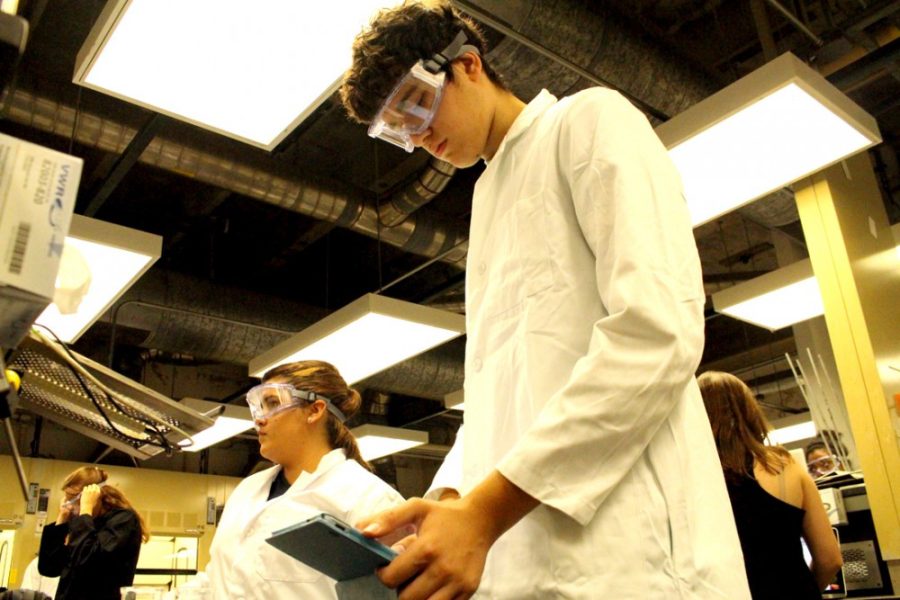The UA is one of eight universities selected by the Association of American Universities to take part in the Undergraduate Science, Technology, Education and Mathematics Education Project initiative, and the STEM departments at the UA have been working to reform their teaching strategies.
The UA STEM Project received a grant in June 2013 and will be funded for the next two years. The grant is essentially designed for universities that are transforming STEM courses by making them more student-centered so students are more engaged in the learning process, according to Vicente Talanquer, a chemistry and biochemistry professor.
“The grant is helping people in different STEM departments to implement these changes in courses,” Talanquer said. “It’s providing resources to develop new curriculum, implement those new strategies in the classroom and assess the impact that it’s having.”
Talanquer also said that the grant is paying for faculty to become more involved with the new teaching strategies.
The faculty learning communities at the UA were designed for faculty to find ways to redefine their courses to be centered around this active learning approach.
John Pollard, director of general chemistry, said the change in STEM courses has not been because of previous problems, but is centered on the benefit of student engagement.
“I think it was more of across the country there’s been a wave of change that’s coming, that’s happening in STEM education,” Pollard said, “and it’s because of a lot of the work out there done in science and engineering and math show that engaging students in thinking critically in the classroom can improve learning outcomes.”
In redesigning the classrooms, faculty members have been looking at strategies that improve learning results. Strategies would include increasing the amount of student engagement. According to Pollard, faculty members have been doing this since before the grant.
“When we got this AAU grant, we staked our flag on the ground so to speak and said, ‘We’re really going to really try to make a push here now,’” he said.
This project is intended to help STEM-interested students not only become eager to enroll in these departments, but to encourage already-enrolled students to stay.
“It’s unfortunate when students majoring in STEM disciplines choose to change their major for the wrong reasons,” said Jane Hunter, associate professor of practice in the Office of Instruction and Assessment. “Evidence shows that students who learn in an environment that is more engaging tend to stay in their chosen field. We believe that implementing more effective teaching strategies, we may encourage more students to pursue STEM fields, and we may retain more students in those fields as well.”
According to Talanquer, these researched strategies have not only proven to help engage students in the classroom and retain more knowledge in STEM fields, but have also benefitted females and minorities where there’s more active group work and collaborative activities.
“The [UA-AAU Undergraduate STEM Education Project] does not focus on any specific populations,” Hunter said. “We are focusing on all students. However, many STEM departments across campus are making special efforts to help underrepresented students succeed.”
Kayla Marquez, a computer science senior, said she dropped out of her engineering major because she couldn’t pass a vector calculus class.
“I think this approach that the STEM departments are embarking on will definitely help students who were in the position I was and encourage women to stay in the field,” Marquez said.
Pollard also said that the STEM initiative is aiming to include more women in the STEM fields.
“The idea is that the inclusiveness of more women, not only does that provide more career options for women but also the STEM field benefits from being more diverse both in gender and in race and all of these things,” Pollard said. “The STEM careers, the STEM majors, benefit from having a good amount of men and women.”
He said toward the end of October and beginning of November, there will be a new learning space for students involved in this new STEM culture. According to Pollard, students will sit at round tables instead of individual desks. He also said there will be screens throughout the classroom to promote an atmosphere of student engagement.
Pollard added this will take the UA to the next level in terms of STEM teaching on UA’s campus.
_______________
Follow Jocelyn Valencia on Twitter @_JocelynV_









